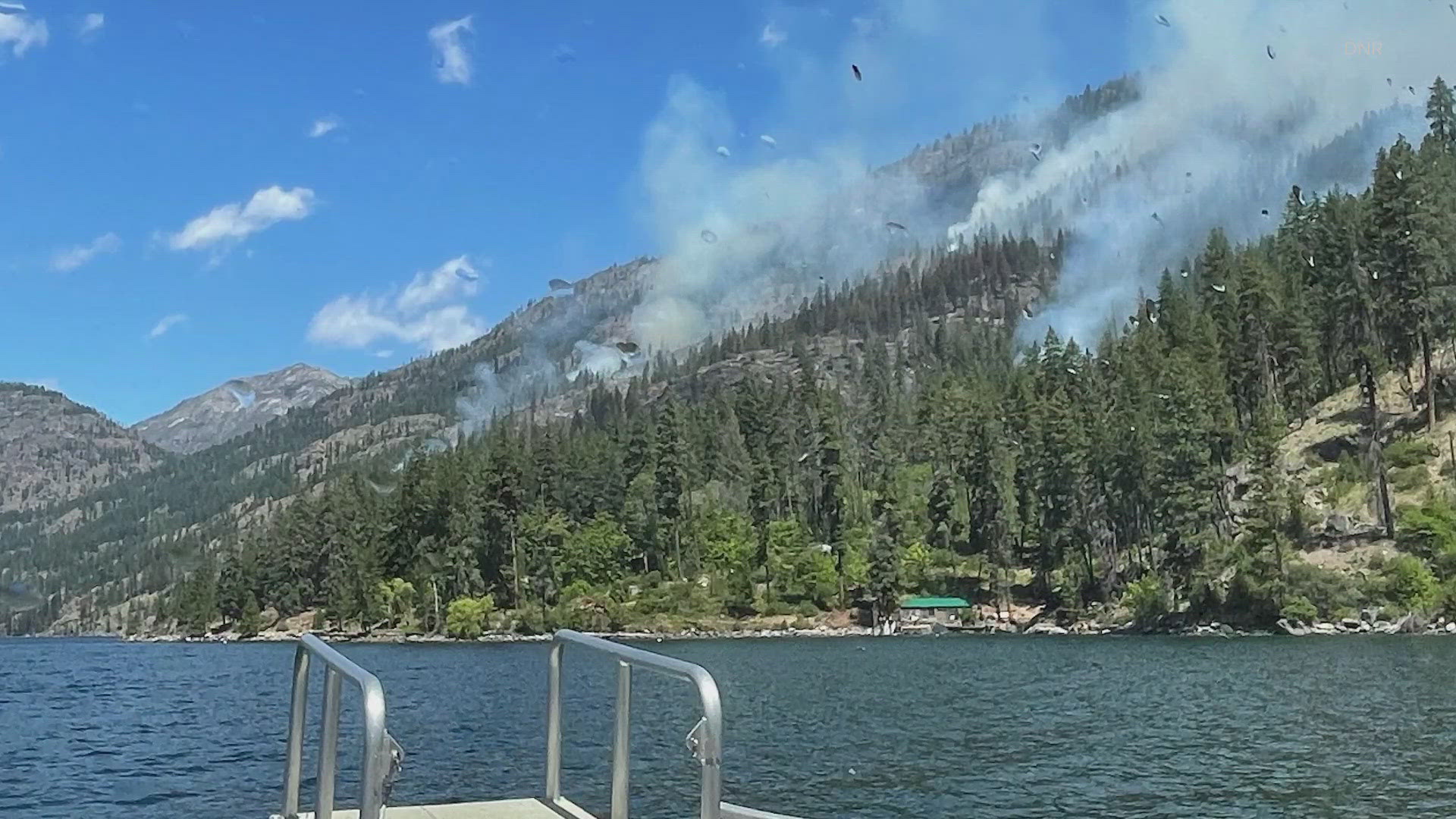WASHINGTON, USA — The Pioneer Fire, which is burning across nearly 4,000 acres along the north shore of Lake Chelan, is predicted to burn until Halloween.
It can be surprising to hear that a wildfire which sparked in early June is expected to keep burning for four more months - however, Thomas Kyle-Milward with the Washington State Department of Natural Resources (DNR) said this is not entirely abnormal.
"It's certainly not atypical for a wildfire to burn through the season - sort of a smoldering fire that carries into a season-ending weather event like a heavy rainfall in September or October," Kyle-Milward said.
Depending on the type of fuel that a fire is burning in, it's even possible for it to keep smoldering into the winter months, like a fire that's burning in heavy timber, or one that gets underground into a root system.
"You're really waiting for Mother Nature to come and put it out," Kyle-Milward said. "That's something that we see here in Washington State and it's something that we see pretty commonly elsewhere as well."
There are multiple factors that go into deciding how aggressively an agency will engage in suppression efforts, including whose jurisdiction a fire is burning on, what resources are available for fire suppression, and whether the fire itself poses a threat to structures or communities.
"Some fires are in very inaccessible places where there aren't a ton of values at risk, and there really isn't a risk of spread," Kyle-Milward said. "Those fires are definitely a lower priority for aggressive suppression efforts."
According to Inciweb, the Pioneer Fire is burning on "steep rugged slopes with limited access" near the north shore of Lake Chelan. Fire personnel are accessing the fire by boat and helicopter, and are currently working to establish fire lines and hose lays to stop the fire's spread. Eight aircraft are involved in fighting the blaze. On Sunday, they dropped over 100,000 gallons of fire on the blaze and logged 18.5 flight hours. High temperatures in the 80s and active winds are not expected to help with suppression efforts.
Data shows that fire seasons, and fires themselves are lasting longer than they would usually in years past, largely due to climate change.
In 2021, the US Department of Agriculture released data that showed fires which typically took an average of eight days to put out in 1986 were taking 37 days or longer to extinguish by 2013. Fire seasons themselves are also now lasting longer, stretching from four months, to anywhere from six to eight months in some of the drier states.
Earlier this spring, state officials said Washington state's wildfire season was expected to start earlier and be slightly more active than usual. The Washington State Department of Ecology declared a drought emergency for most of the state due to drier spring and summer seasons and a low snowpack in the Olympics and Cascades.
Washington's low snowpack is doubly concerning because the rate of melt-off can determine when we can expect wildfire season to begin. The state's snowpack has been lower than average, and the mid to high-elevation forests are expected to be free of snow by some point in June. The Washington Smoke Blog wrote that this means fuels, like dry trees and brush, will be available to burn earlier than normal if dry, warm weather persists.

